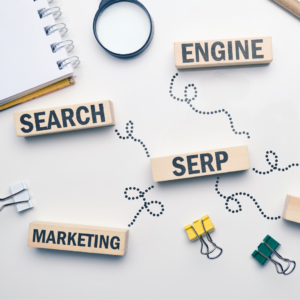In today’s world, understanding analytics growth can make all the difference for a business. Whether you’re a C-suite executive, entrepreneur, or manager, the ability to harness data and turn it into meaningful insights is crucial. Analytics growth not only helps you track revenue growth but also provides valuable insights into customer retention and business growth strategies. Let’s explore how analytics can help your business thrive and outsmart competitors in the data analytics market.
What is Analytics Growth?
Think of growth analytics as a GPS guiding your business journey. By analyzing collected data, you get clear directions on where your business is and how to reach your goals. Whether you’re looking to expand in the data analytics market size or improve customer acquisition, analytics growth gives you the tools to make smarter, more data-driven decisions.
Businesses today use data analytics applications across various sectors, from supply chain management to marketing campaigns. For instance, the retail industry uses descriptive analytics to understand customer behavior, while technology companies rely on predictive analytics to anticipate future growth and trends. Learn more about data analytics for business success.

The Role of Data Analytics in Business Success
Imagine you’re a restaurant owner, and you’ve noticed that one dish is particularly popular. By using data analytics, you can track key metrics such as how often this dish is ordered and during what time of the year. This helps you fine-tune your menu to boost revenue growth. For larger businesses, enterprise data helps guide decisions in areas like supply chain processes and customer acquisition.
For C-suite executives, data-driven decision-making is essential in understanding the competitive landscape and making choices that lead to business growth. Analytics also helps streamline supply chain management, providing actionable insights that allow you to cut costs and improve efficiency. Learn how to apply these strategies with data analytics courses.
Key Analytics Tools and Strategies for C-Suite Executives
For C-suite executives, understanding how to leverage analytics tools and strategies is critical for driving business success. Here’s a breakdown of some essential tools and tactics that every executive should consider:
Google Analytics
What it does: Tracks website traffic, user behavior, and online performance metrics.
Why it’s important: This tool helps executives understand the customer engagement and behavior on their digital platforms. It allows businesses to optimize their websites, leading to better customer acquisition and conversion rates.
Key Insight: You can monitor how different marketing campaigns drive traffic and conversions, helping you allocate resources more effectively.
Power BI
What it does: Provides interactive visualizations and business intelligence capabilities.
Why it’s important: Power BI integrates with various data sources to create comprehensive reports that provide actionable insights. For example, it helps track growth metrics like revenue growth or customer retention.
Key Insight: This tool is especially helpful for C-suite executives to visualize key metrics in real time and make data-driven decisions that align with the company’s goals.
Tableau
What it does: A data visualization tool that transforms raw data into easy-to-understand charts and graphs.
Why it’s important: Tableau allows businesses to see their enterprise data clearly, whether it’s related to supply chain management or customer analytics.
Key Insight: For executives looking to analyze collected data quickly and present it to stakeholders, Tableau makes complex datasets more digestible, helping to streamline strategic discussions.
Descriptive and Predictive Analytics
What it does: Descriptive analytics helps summarize past performance, while predictive analytics uses historical data to forecast future trends.
Why it’s important: C-suite leaders rely on these analytics to understand both where the company has been and where it’s heading. Predictive models can forecast future growth, enabling proactive decision-making.
Key Insight: By using predictive analytics, executives can optimize growth strategies and forecast factors like average revenue or demand forecasting.
ERP (Enterprise Resource Planning) Systems
What it does: ERP systems like SAP and Oracle manage and automate back-office functions, from human resources to supply chain processes.
Why it’s important: These systems integrate with data analytics tools to give executives a comprehensive view of operations. They help in tracking supply chain data, customer data, and even business application data for better decision-making.
Key Insight: ERP systems provide a centralized source of truth, helping executives manage everything from customer acquisition costs to supply chain management efficiency.
Machine Learning & AI-Powered Analytics
What it does: These technologies analyze vast amounts of big data to identify patterns, automate tasks, and provide advanced forecasting.
Why it’s important: Machine learning and AI are increasingly vital for staying competitive. They allow companies to automate repetitive tasks, generate valuable insights, and optimize processes, leading to improved efficiency and customer success.
Key Insight: AI-powered analytics offers prescriptive analytics—it doesn’t just predict what will happen but suggests how to make it happen. This is crucial for executives aiming to innovate and stay ahead in a rapid growth market.
Business Intelligence (BI) Tools
What it does: BI tools like Microsoft BI and Domo collect and process business data to provide security intelligence, customer insights, and comprehensive dashboards.
Why it’s important: Executives use BI tools to monitor business performance, identify key factors influencing success, and analyze market trends.
Key Insight: These tools help in measuring growth over time and tracking the success of business strategies, offering a data-backed approach to ensure long-term success.
By integrating these tools into your company’s operations, C-suite executives can ensure they’re making informed decisions that directly contribute to business growth and long-term success.

How Analytics Growth Helps Entrepreneurs
Entrepreneurs, especially those working in industries like tech or retail, rely heavily on data analytics to fuel rapid growth. By analyzing customer data, you can find out which products are popular and identify trends in customer engagement. This helps you allocate resources effectively and fine-tune your marketing campaigns to boost customer acquisition and reduce customer acquisition costs.
For example, if you’re launching a new product, you can use growth analytics to measure customer success and pinpoint exactly where improvements are needed. Analyzing available supply chain data can also help optimize your logistics, ensuring that you’re meeting customer demand efficiently. Get personalized advice on using analytics for your business.
Real-World Success Stories
Companies like Amazon and Netflix have become giants by leveraging big data and data mining techniques. Netflix uses customer analytics and machine learning to recommend content, while Amazon optimizes its supply chain management segment through advanced analytics to ensure fast deliveries.
Even smaller businesses can benefit from these strategies. By prioritizing growth analytics, you can make smarter decisions that lead to increased customer loyalty and stronger business strategy. The key to success lies in understanding and using the right analytics tools to transform your collected data into actionable insights.
Choosing the Right Analytics Tools for Organizational Growth
When choosing an analytics tool, it’s essential to focus on the specific needs of your business. Are you looking to improve your supply chain data? Or do you want to enhance your customer experience through better customer behavior tracking? Whether you need insights into the enterprise resource planning segment or you’re looking for better ways to manage your customer base, there’s a tool out there for you.
Before diving in, ensure that the tool fits your goals—whether it’s measuring segment growth or enhancing security intelligence. Explore the best analytics tools to find the one that works for your business.
Conclusion: Unlock the Potential of Data Analytics for Sustainable Growth
Analytics growth is no longer optional—it’s a must for any business looking to thrive in today’s market. Whether you’re a C-suite executive, entrepreneur, or data analyst, learning how to use predictive analytics and augmented analytics can help you stay ahead of the competition. It’s time to unlock the full potential of your data warehouses, understand growth factors, and optimize your processes for long-term success.
With growth analysis, market trends, and industry trends shaping the future, your business can’t afford to ignore the power of data analytics. Start using these tools today to drive measuring growth, enhance customer loyalty, and secure a competitive edge in the market growth game. Unlock your business potential today.




